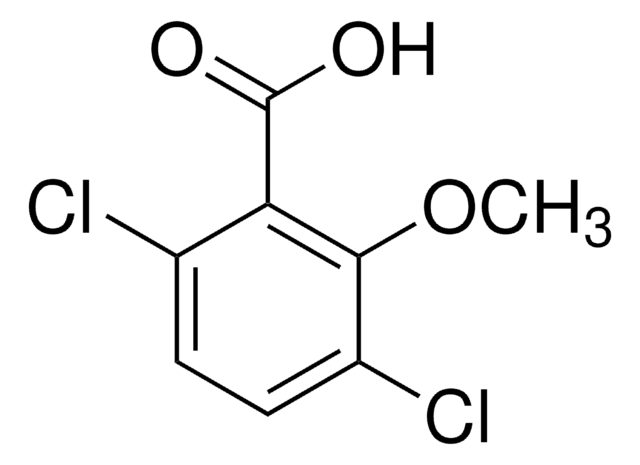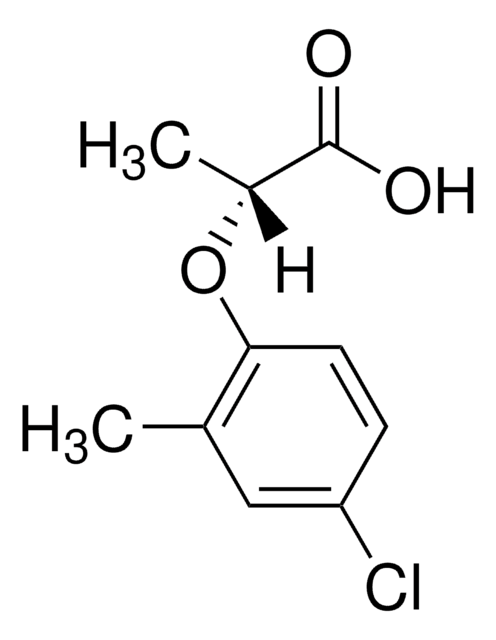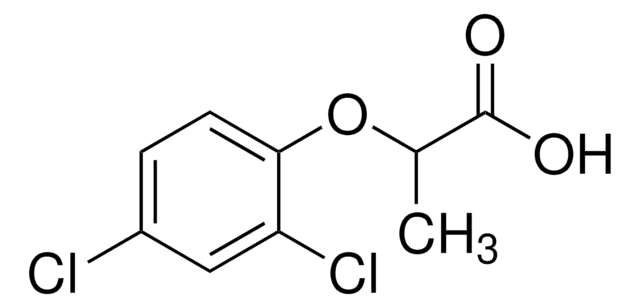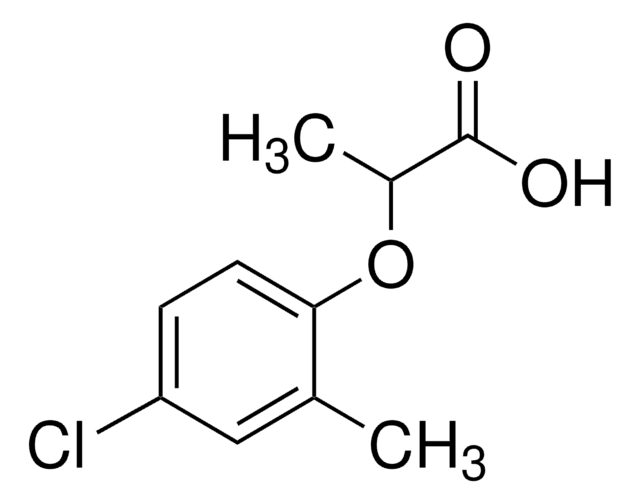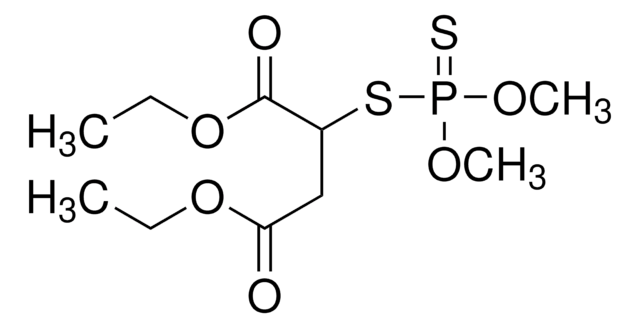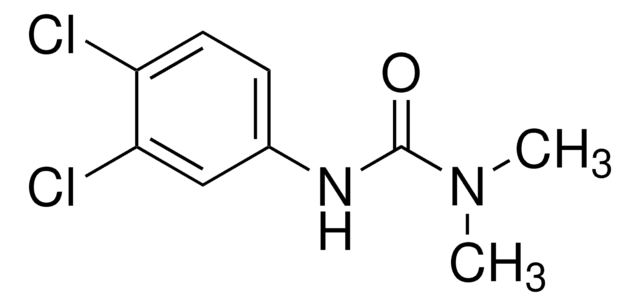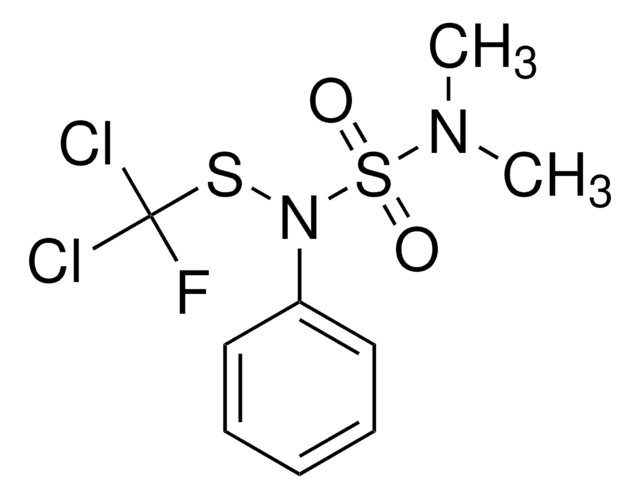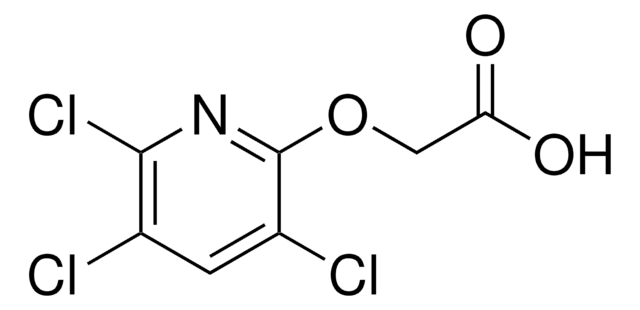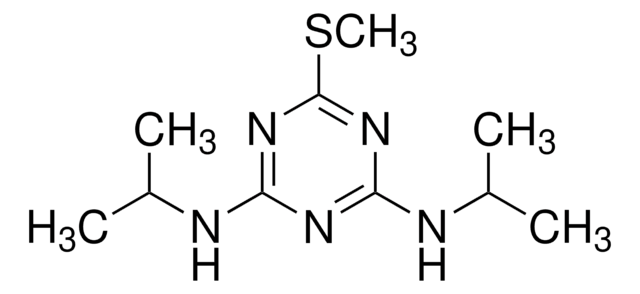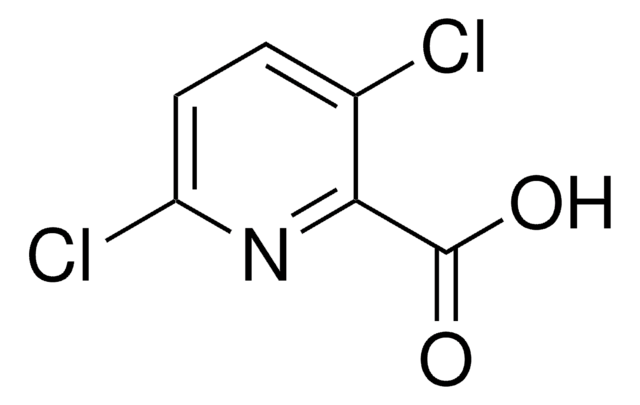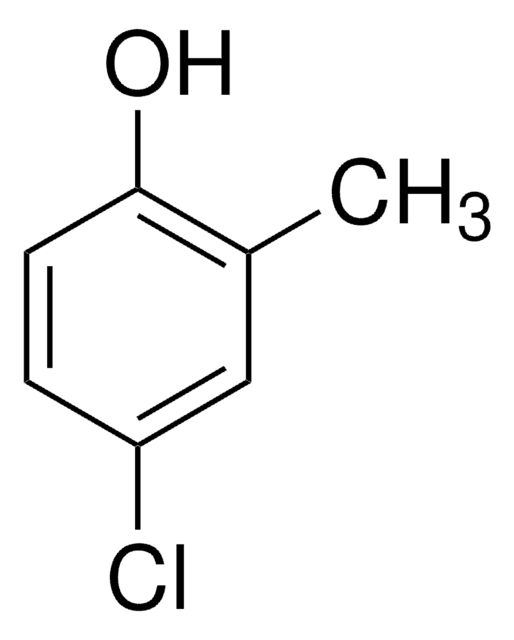45555
MCPA
PESTANAL®, analytical standard
Sinônimo(s):
4-Chloro-2-methylphenoxyacetic acid, 4-Chloro-o-tolyloxyacetic acid, MCPA
About This Item
Produtos recomendados
grau
analytical standard
Nível de qualidade
linha de produto
PESTANAL®
prazo de validade
limited shelf life, expiry date on the label
técnica(s)
HPLC: suitable
gas chromatography (GC): suitable
pf
114-118 °C (lit.)
aplicação(ões)
agriculture
environmental
Formato
neat
cadeia de caracteres SMILES
Cc1cc(Cl)ccc1OCC(O)=O
InChI
1S/C9H9ClO3/c1-6-4-7(10)2-3-8(6)13-5-9(11)12/h2-4H,5H2,1H3,(H,11,12)
chave InChI
WHKUVVPPKQRRBV-UHFFFAOYSA-N
Procurando produtos similares? Visita Guia de comparação de produtos
Aplicação
Produtos recomendados
Informações legais
Palavra indicadora
Danger
Frases de perigo
Declarações de precaução
Classificações de perigo
Acute Tox. 4 Oral - Aquatic Acute 1 - Aquatic Chronic 1 - Eye Dam. 1 - Skin Irrit. 2
Código de classe de armazenamento
11 - Combustible Solids
Classe de risco de água (WGK)
WGK 2
Equipamento de proteção individual
dust mask type N95 (US), Eyeshields, Gloves
Escolha uma das versões mais recentes:
Já possui este produto?
Encontre a documentação dos produtos que você adquiriu recentemente na biblioteca de documentos.
Os clientes também visualizaram
Nossa equipe de cientistas tem experiência em todas as áreas de pesquisa, incluindo Life Sciences, ciência de materiais, síntese química, cromatografia, química analítica e muitas outras.
Entre em contato com a assistência técnica


